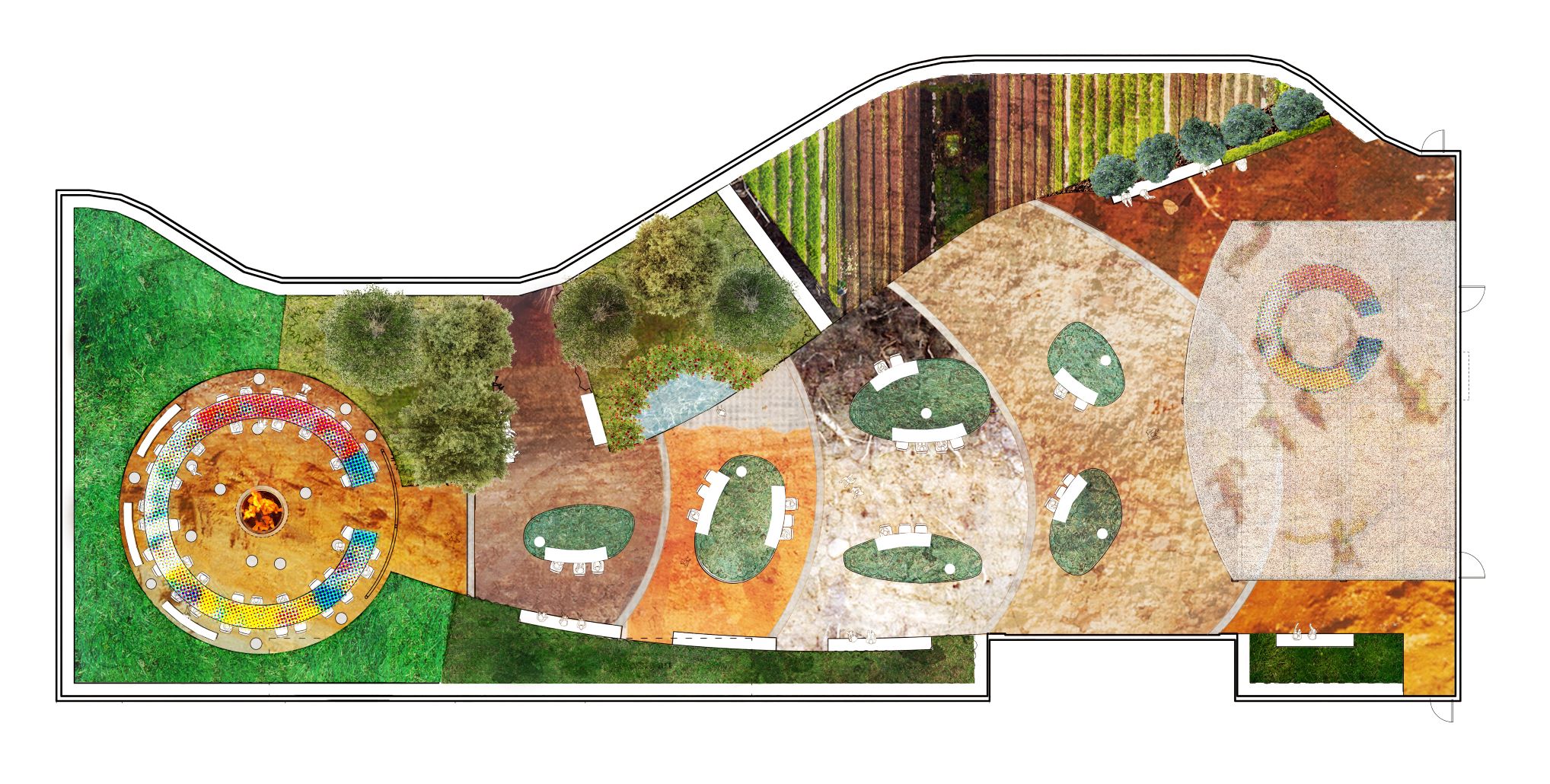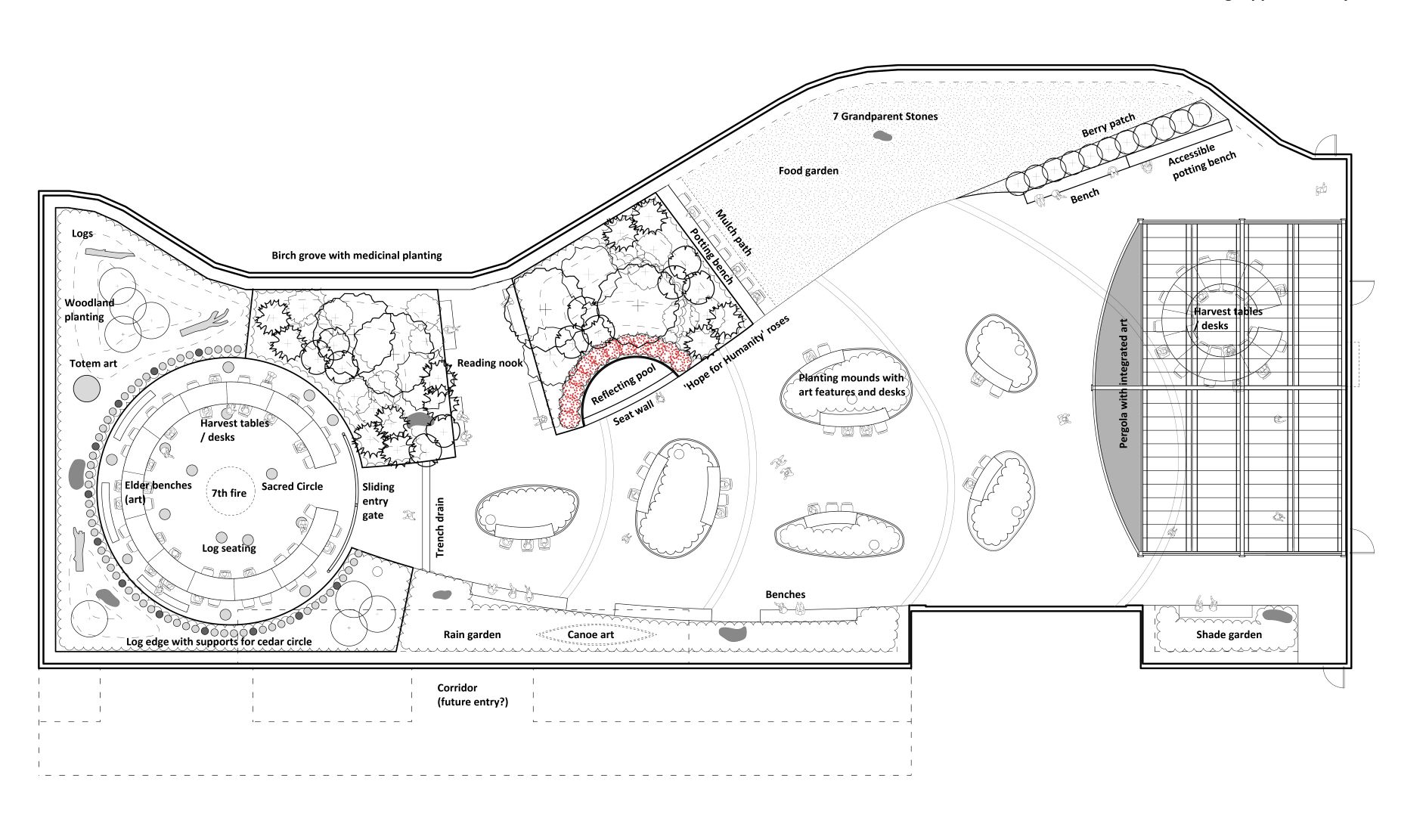Plans for Indigenous Healing Garden moving forward

The Ted Rogers School’s Indigenous Healing Garden now has a design concept shared with the community, which details the elements and features of the plan for the 7th floor courtyard space.
The concept for the Indigenous Healing Garden celebrates the garden as an Indigenous prioritized space, and is designed to be connected, peaceful, calm, relaxed, inspired, grounded, energized and safe. It takes as inspiration what was learned through extensive engagement, such as requests for a combination of open spaces for gathering, and quiet and secluded areas for private contemplation and meditation.
In 2020, the Ted Rogers School announced plans to create an Indigenous Healing Garden in the outdoor courtyard of the school to help Indigenous students and staff to feel at home on campus and to educate the entire university community about aspects of Indigenous culture, while also addressing many of the health and wellness issues currently faced by students.
After months of research, meetings and community consultation, the final design for the new Indigenous Healing Garden was presented in July 2022.
We would like to thank members of the Indigenous Guidance Circle: Elder Joanne Dallaire, Samantha Howden, Amy Desjarlais, Jeremie Caribou, Michael Mihalicz and Samantha Williams, and student and staff support from Aqsa Maryam and Sana Mulji Dutt, respectively, as well as consultation participants for their time, work and insight. In addition, we would like to thank the Indigenous design team led by Sheila Boudreau (Principal, SpruceLab), with Terence Radford (Trophic Design), Eladia Smoke (Smoke Architecture) and Gary Pritchard (4 Directions of Conservation).

Design concept
The structure of the garden and the elements within are to be formed of organic shapes, and of natural materials. The garden will be a comfortable, safe and peaceful space, where one can connect with water, plants and other creatures. The design also responds to the need for opportunities to be involved with the garden, such as growing food for the cafe, herbs, medicines and plants for Traditional crafts and ceremony, as well as to tend all of the plant species that will find this their home.
Landscape concept plan
The Indigenous Healing Garden design has several layered meanings that are revealed as one enters and explores the space. Opportunities for Traditional Teachings are discovered across the garden through an artistic design, with culturally significant forms and natural elements placed in a sensitive way. While it is expected that wayfinding signage will be created, with access to digital and recorded storytelling features, the garden will resonate on an emotional, spiritual and physical level without having to access this information because it will have presence, a wholeness and spirit of its own.
Paving design inspiration
Paving connects visitors to the garden through their feet, which is how humans can always be in contact with Mother Earth. Where paving is to be used, earth-toned modular concrete unit pavers are proposed, designed with paver-sized, laid-in patterns that allude to the Traditional crafts and practices found across the country. This design will echo the message of the large wood map of Indigenous Treaty Lands installed at the Ted Rogers School.
It will also honour the Eastern Door, which is of great significance to the Anishinaabeg, the First Nations Treaty Rights Holders of Toronto (Mississaugas of the Credit First Nation, Treaty 13, and the Williams Treaties First Nations to the east).
Planting design palette
Native plants, and the creatures they attract, feed and create homes and protection for, are foundational to the Indigenous Healing Garden, and are appreciated as being ‘All Our Relations.’ Significant cultural plants are found across the space, as well as in special areas designed to honour their meanings and importance, such as Grandmother Cedar (Nookomis-giizhik) beside Grandfather Birch (Nimishoomis-wiigwaas, both in Anishinaabemowin), near the Sacred Circle. Rainwater is also directed to planting areas, including from downspouts to a rain garden and water features (trench drain, and reflecting pools). The garden will feature either stones or soils from different parts of Canada as well to signify the coming together of all people to share space.

We are deeply grateful for Ewan Cassidy's work on this project as an integral part of the student team. Ewan's legacy as a champion and a tireless advocate for the development of this Indigenous Healing Garden and his insight in consultations will live on in the garden.